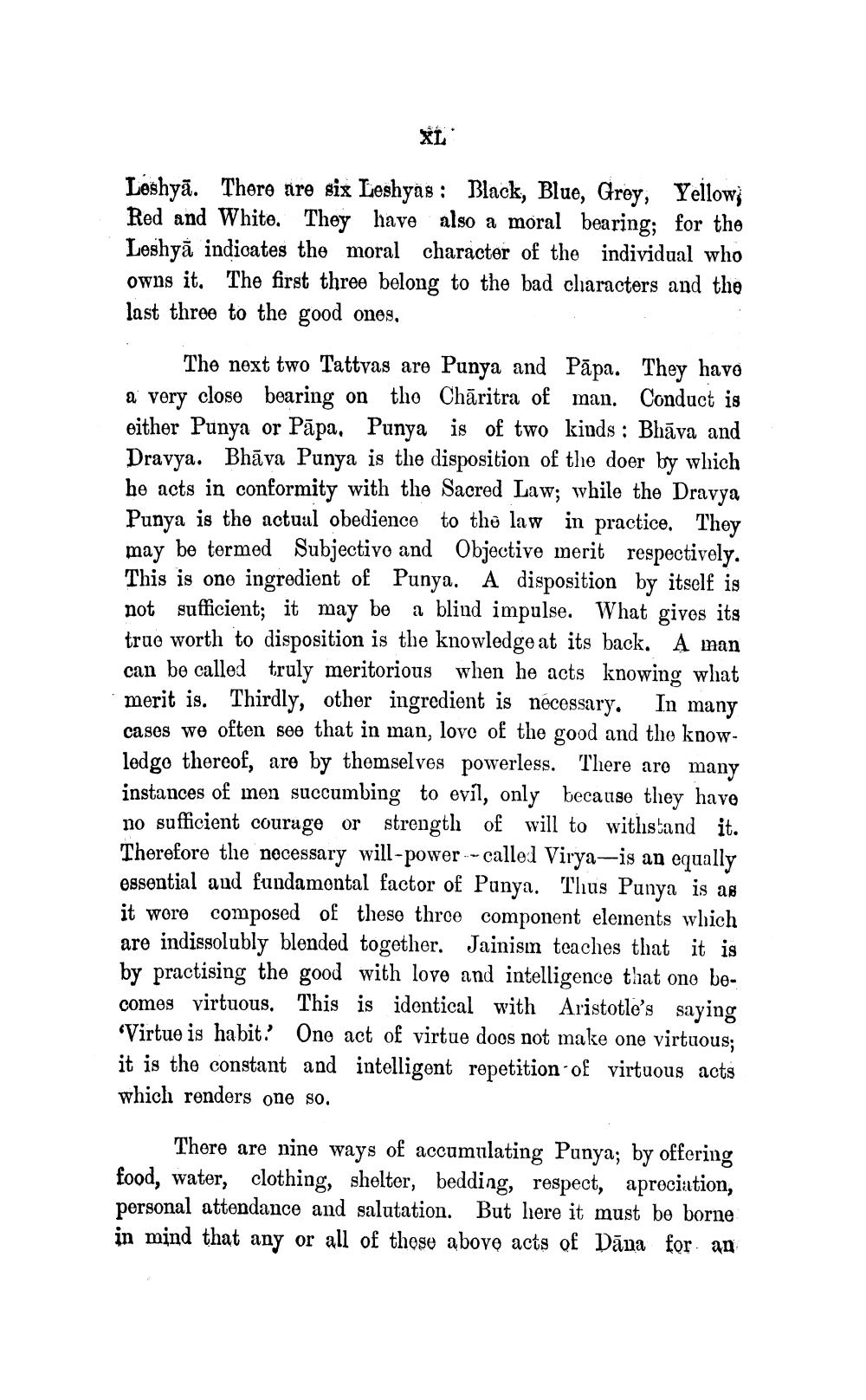________________
XL
Leshya. There are six Leshyas: Black, Blue, Grey, Yellow, Red and White. They have also a moral bearing; for the Leshya indicates the moral character of the individual who owns it. The first three belong to the bad characters and the last three to the good ones.
Papa.
man.
The next two Tattvas are Punya and a very close bearing on the Charitra of either Punya or Papa. Punya is of two kinds : Bhava and Dravya. Bhāva Punya is the disposition of the doer by which he acts in conformity with the Sacred Law; while the Dravya Punya is the actual obedience to the law in practice. They may be termed Subjective and Objective merit respectively. This is one ingredient of Punya. A disposition by itself is not sufficient; it may be a blind impulse. What gives its true worth to disposition is the knowledge at its back. A man can be called truly meritorious when he acts knowing what merit is. Thirdly, other ingredient is necessary. In many cases we often see that in man, love of the good and the knowledge thereof, are by themselves powerless. There are many instances of men succumbing to evil, only because they have no sufficient courage or strength of will to withstand it. Therefore the necessary will-power-called Virya-is an equally essential and fundamental factor of Punya. Thus Punya is as it wore composed of these three component elements which are indissolubly blended together. Jainism teaches that it is by practising the good with love and intelligence that one becomes virtuous. This is identical with Aristotle's saying 'Virtue is habit. One act of virtue does not make one virtuous; it is the constant and intelligent repetition of virtuous acts which renders one so.
They have Conduct is
There are nine ways of accumulating Punya; by offering food, water, clothing, shelter, bedding, respect, apreciation, personal attendance and salutation. But here it must be borne in mind that any or all of these above acts of Dana for an




